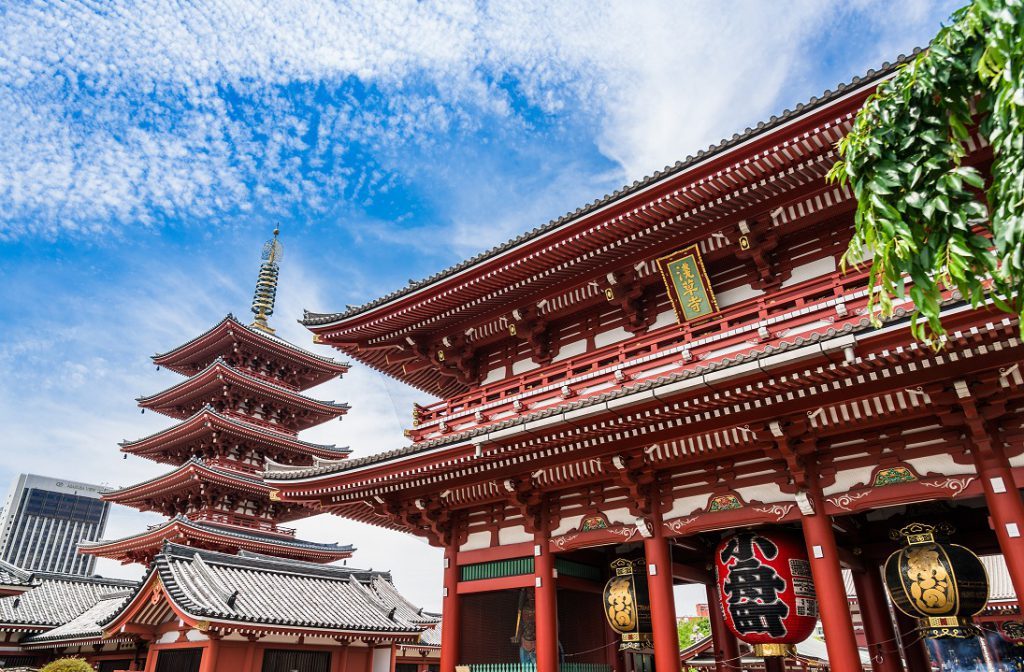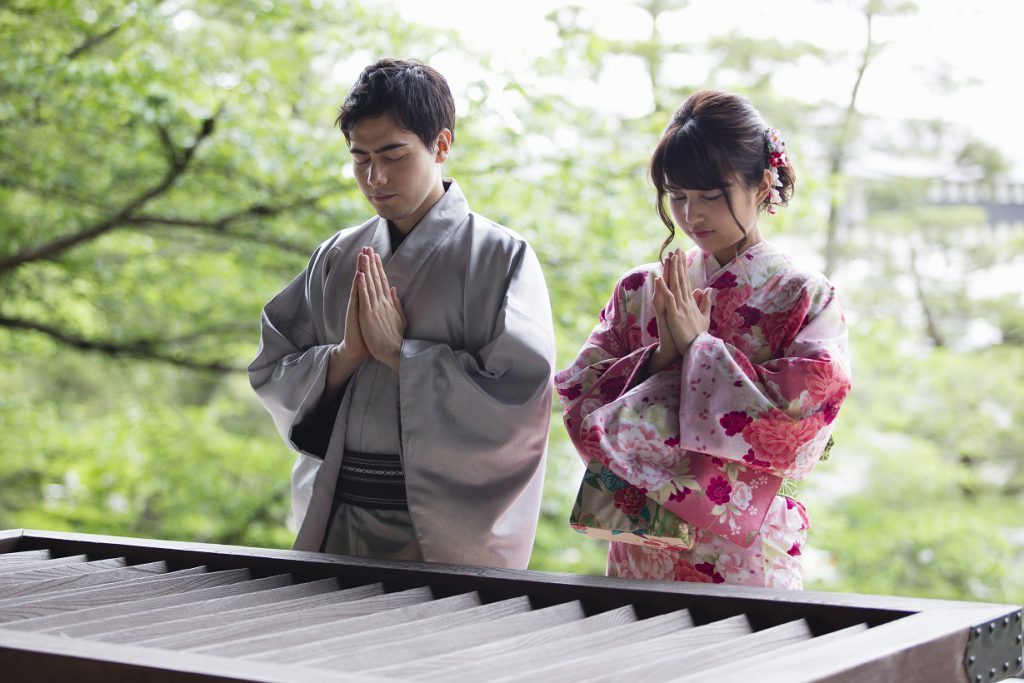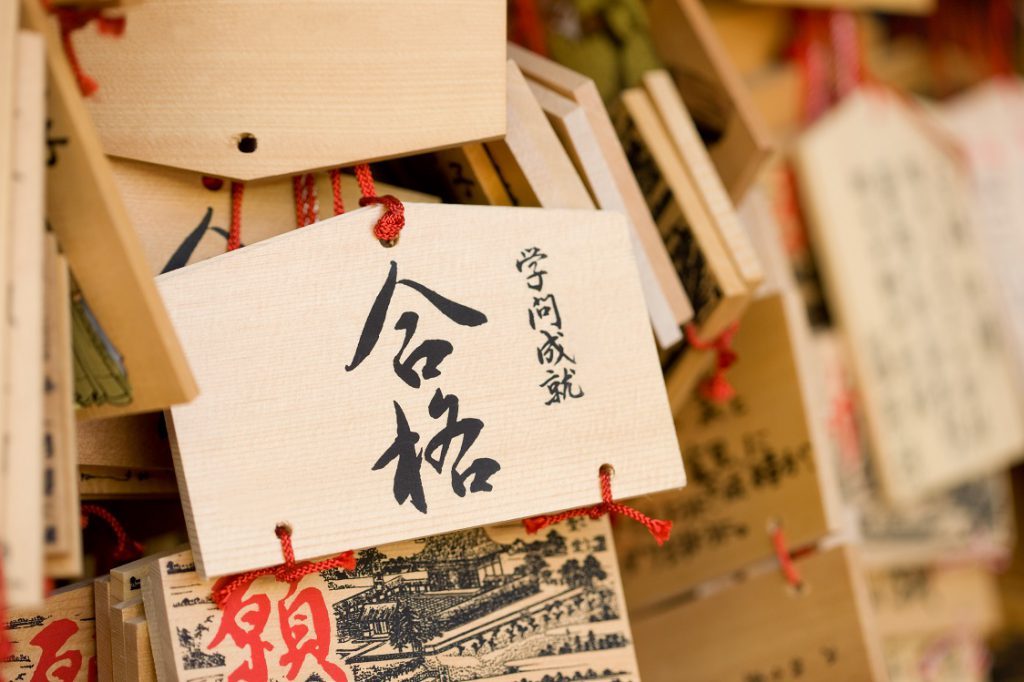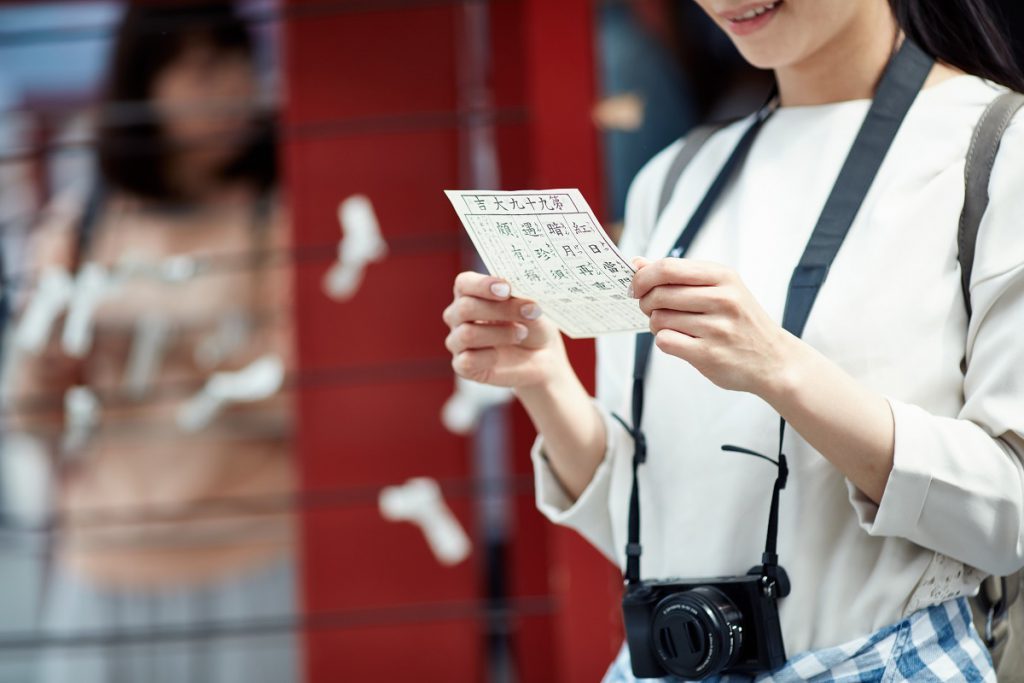
So in the previous article, we gave you essential tips when visiting a Japanese shrine. This time, however, we will be talking about Japanese temples. Temples are known as “tera” (寺) in Japanese. Joined with other characters, this becomes “-dera”, or the pronunciation changes entirely to become “-ji”—as in Kiyomizu-dera or Senso-ji (these can also be spelled without the hyphen). “-In” (院) is another suffix associated with temples (although this character is also used to refer to many other institutions!).
The main focus of worship at temples is Buddha himself. You can also find incense burners at a temple, and large complexes will usually have a pagoda as well. Take note though, that shrines and temples are different, but they do co-exist, and can be confusing at times. At some points in history, some temples were built on shrines, and vice-versa, which is why it is not surprising that the lines between Buddhism and Shintoism can be blurry. The sprawling Kiyomizu-dera in Kyoto, for one, has a shrine on its premises.
Etiquette at the Shrines

The same rules apply as those of visiting a shrine – bow slightly before entering, walk to the sides, and purify yourself at the chozuya; however, the manner in which you pay respect varies.
- 1. Burn incense (usually provided at the temple); the scent of incense is food for the Buddha. Lighting your own incense stick off the burning sticks of others is a no-no, since it means taking on their sins.
- 2. Bow slightly.
- 3. Gently toss a coin into the box in front of you.
- 4. Ring the bell (if there is one) 2 or 3 times.
- 5. Bow slightly and pay your respects, putting your hands together but DO NOT CLAP. It is recommended that you hold a string of beads or rosary while you pray. Do not forget to thank the Buddha!
- 6. Bow slightly.
What Do I Do Next?
Ema

After paying your respects, at shrines you can purchase ema, which are small wooden plaques in which you write your wishes and then hang them to be received by the gods. Hamaya, which are “holy arrows” that people decorate at home to ward off evil spirits, and different kinds of omamori, or amulets, such as for road safety and easy baby delivery, are popular souvenirs. Commemorative stamps called shuin are offered at both shrines at temples as a memento of having paid your respects.
Omikuji

Furthermore, for usually only 100 yen, you can purchase an omikuji, a slip of paper with fortunes written on it; depending on your fortune, you can either keep them or tie them to a rope. While mostly in Japanese, some shrines offer English copies of the fortunes as well. Omikuji fortunes are classified as follows (from best to worst):
- dai-kichi (大吉) – great blessing
- chuu-kichi (中吉) – middle blessing
- sho-kichi (小吉) – small blessing
- kichi (吉) – blessing
- sue-kichi (末吉) – ending blessing
- kyo (凶) – curse
- dai-kyo (大凶) – great curse
Additionally, omikuji have advice for different aspects of the upcoming year, such as travel, relationships, health, and wishes.
Next time you visit a Japanese temple, don’t just take pictures – experience it by paying your respects and following these easy steps.










